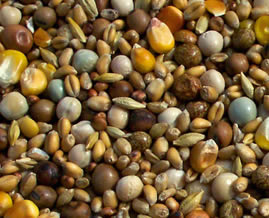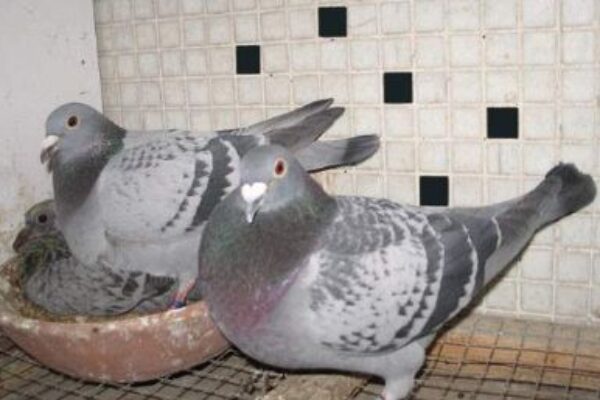Pigeon Feed Quality
 First and foremost, the food must be of the best quality.
First and foremost, the food must be of the best quality.
Good quality grain is a clean grain with low moisture content. Grains with high moisture and/or are dirty, dusty and uncleaned are more susceptible to fungus and bacterial germs and poisons than dry clean grain. The truth is that germs on and in the grains will affect the performance of your birds during breeding, moulting, showing and racing. The food used for racing pigeons must be fresh, clean and the highest quality.
The simple fact is that cheap food is never the best food.
The farmer receives more for the graded feed than for the weather affected (water, heat, hail etc) grain sold primarily as stock food. Some produce merchants buy this food for the pigeon fanciers to keep their prices down, but fail to understand that ungraded feed is susceptible to moulds and mould toxins that destroy the nutritional content of the feed. These moulds are a major health hazard, predisposing the race team to many illnesses. The poor quality grain simply fails to provide the required energy and nutrient needs of the competing bird. The result is poor performance and flock illness.
Nowadays, the grain merchants make a big effort to provide clean food, free of fungus, bacteria and toxins.
Most fanciers now understand that the quality of the feed does have a substantial effect on performance and they purchase “farm fresh” feed guaranteed free of moulds and mould toxins. Castle Grains of Queensland and Fernando’s of Melbourne have set the standard for all other grain merchants in Australia. Culture testing is the best method of checking the grain. Even if the food tested is not perfect then it can still be helped, by mixing mould inhibitors (PEP) with it. Many fanciers use mould inhibitors routinely in order to protect their mixes from the effects of moisture during storage.
The pigeon eats more poor quality food but less of the dry clean food. This in itself makes unclean food more expensive.
The feed must be stored correctly and protected from moisture and rodents.
The correct storage of your grain after purchase is necessary if you are to preserve its culture-free status. If you allow moisture to infiltrate your feed then mould and bacterial contamination will most likely ensue, thereby nullifying all of your best efforts to provide your birds with the very best food. If your grain is very dry and culture tests clear then it must be stored in an airtight drum and elevated off the ground. This will protect your grain from absorbing moisture from the surrounding air during times of high humidity (e.g. rain periods and with night time high humidity). Grain high in moisture is best mixed with a mould inhibitor (PEP). Then it is stored with an open lid to allow it to dry out in times of low humidity and sealed in times of high humidity. The fungal spores resident on moist grain is more likely to become activated when stored in the dark and without air circulation to help dry it out.
Pigeon Feed Quality by Dr. Rob Marshall









Hi Dr Marshall i keep mine in metal barrels with lids i have for years.
What your thought on this Brad.